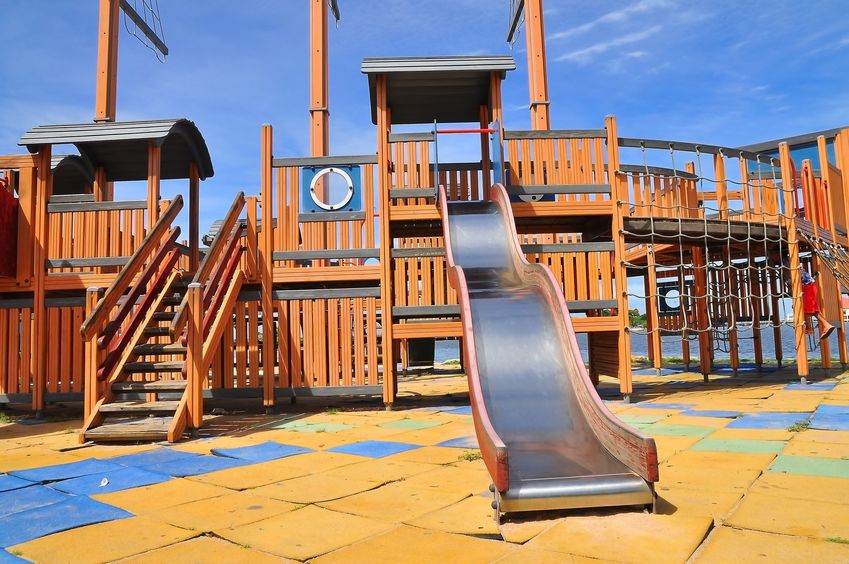
The surface beneath your playground equipment might not be the flashiest part of the play space, but it’s one of the most important. Playground surfacing cushions falls, keeps kids safe, and plays a major role in how accessible and enjoyable your playground is for everyone. But like any part of your outdoor environment, it wears out over time. Knowing when to replace it can make the difference between a safe, welcoming space and one that puts children at risk.
So, how can you tell when it’s time to make a change? Let’s walk through the top signs your playground surfacing may be due for a replacement.
Visible Wear and Damage
If your surface looks rough, it probably is. Over time, all types of surfacing can show signs of wear, especially in high-traffic areas like under swings or at the end of slides. Here’s what that might look like depending on your surface:
- Poured-in-place rubber: cracks, thinning, or bald spots
- Rubber tiles: lifting edges, seams that collect debris, or chunks missing
- Engineered wood fiber (EWF): compacted or decomposed material, bare patches
- Loose rubber: uneven coverage, fading, or loss of bounce
- Artificial turf: torn edges, flattened blades, or seams pulling apart
Even if your surfacing passes a casual glance, any obvious damage or missing areas are signals that safety may be compromised.
Poor Drainage or Standing Water
If water is pooling on your playground after a rainstorm, it’s not just an inconvenience. It could be a sign that your surfacing or sub-base has deteriorated. Water pooling can lead to mold growth, slippery areas, and increased breakdown of the material.
In loose-fill surfacing like EWF or loose rubber, standing water can wash away or compact the material. For unitary surfaces like poured rubber or turf, drainage issues may mean the sub-base is no longer supporting proper flow.
If the playground is soggy for days after a rain, it’s worth having the drainage system and surface condition inspected.
Your Surface Fails a Safety Test

Playground surfacing should meet ASTM F1292 standards for impact attenuation. This ensures the surface can absorb the shock from a fall and help prevent serious injuries. Over time, materials like wood fiber can compact or degrade, while rubber surfaces may lose their elasticity or depth.
If your surface fails an annual or semi-annual inspection, it may no longer be cushioning falls as required. This is a clear indication that replacement is necessary to meet both safety standards and liability protection.
Maintenance Has Become Constant
All playground surfaces need a little upkeep, but if you find yourself constantly patching, topping off, raking, or replacing small sections, it might be time to consider a full replacement. Some signs of escalating maintenance include:
- Needing to top off wood fiber every few months instead of every few years
- Making frequent repairs to cracks or tears in rubber surfacing
- Regular complaints from parents or staff about trip hazards
While maintenance is part of the deal, non-stop fixes are often a sign that your surface has reached the end of its lifespan.
It’s No Longer ADA Compliant
Older playgrounds may have surfacing that doesn’t meet modern ADA accessibility standards. If your surface is difficult for wheelchairs or mobility aids to move across, it could be preventing inclusive play.
Surfaces like compacted EWF may become uneven or too soft, and even worn turf or cracked rubber tiles can make navigation difficult. If you’re unsure whether your surfacing still meets current guidelines, it might be time for an upgrade that prioritizes accessibility for every child.
Safety Hazards Are Increasing
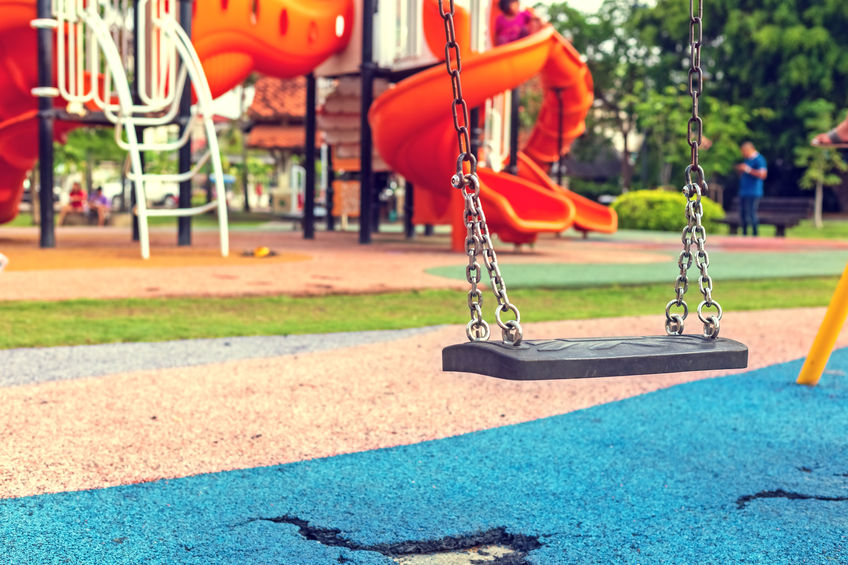
Look out for signs that your surface may be putting children at risk:
- Uneven spots causing trips or falls
- Exposed sub-base material
- Loose-fill that’s too shallow to cushion a fall
- Extreme heat retention in turf or rubber materials
These issues can result in injuries or discourage families from using the space. If the surface no longer feels safe for walking, crawling, or playing on, it’s definitely time to take action.
Its Visually Unappealing
Playgrounds are meant to be inviting. If your surface is faded, discolored, dirty, or full of patches, it can affect how your entire playground is perceived. Even if the equipment is still in great shape, old surfacing can drag down the appearance and overall experience.
New surfacing can refresh the whole area, making it more appealing for kids, families, and visitors. Bright colors, fun patterns, or game zones can also enhance how the space is used.
Bonus Tip: Know the Average Lifespan
Each type of playground surfacing has a general life expectancy:
- Engineered wood fiber: 3 to 5 years
- Loose rubber: 8 to 10 years
- Poured-in-place rubber: 10 to 15 years
- Rubber tiles: 10 to 15 years
- Artificial turf: 10 to 15 years
If your surface is approaching or exceeding its typical lifespan, even without major visible damage, it may be time to plan for replacement before problems arise.
Don’t Wait for an Accident!
If you’re spotting one or more of these signs, now’s the time to evaluate your surfacing and consider your next steps. The good news? You don’t have to figure it out alone.
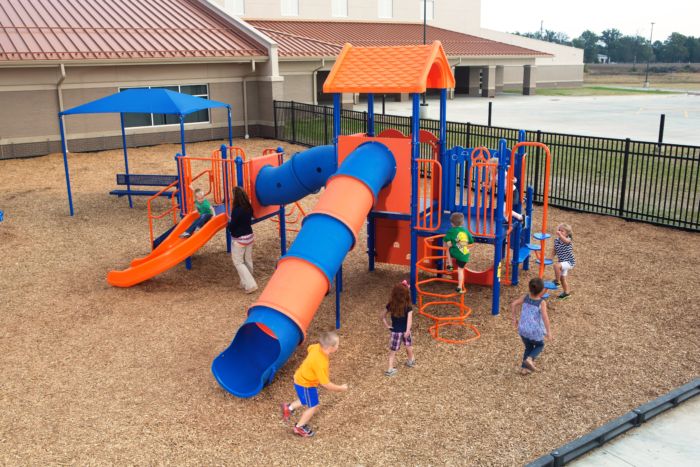
AtKidstuff Playsystems, we offer a full range of ADA-compliant, IPEMA-certified surfacing solutions—including engineered wood fiber, loose rubber, poured-in-place rubber, tiles, and artificial turf. We’ll help you assess the condition of your current surface, recommend the best replacement options, and connect you with certified installers who can get the job done right!
If you’re unsure whether it’s time to replace or repair your playground surfacing, please call us at (800)255-0153 or request a quote online. We’re happy to help you create a play space that’s safe, inclusive, and built to last.

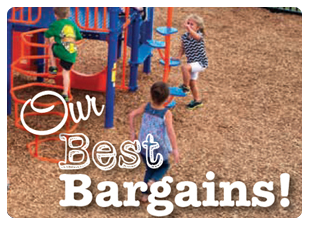
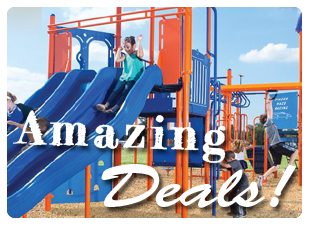
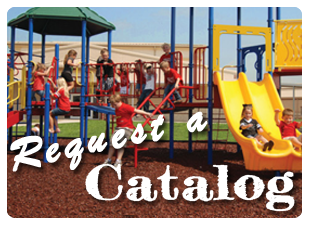
Leave a Reply